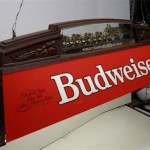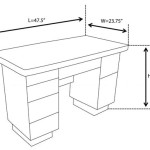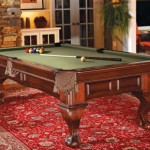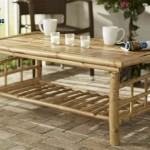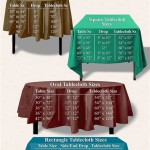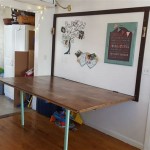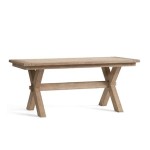What Size Pool Table Do Bars Use?
The question of pool table size in bars is not as straightforward as it might initially seem. While a standard size exists, various factors influence the selection of a specific table dimension for a commercial establishment. These considerations range from space availability and regulatory requirements to the desired playing experience and overall business strategy.
Understanding the nuances of pool table sizes is crucial for bar owners looking to optimize their recreational offerings. Choosing the right size can contribute significantly to customer satisfaction, gameplay quality, and the efficient use of valuable floor space. Furthermore, awareness of potential regulations regarding space around the table is essential for compliance and safety.
This article will delve into the typical pool table sizes found in bars, explore the factors that determine the appropriate size for a given establishment, and highlight the key considerations for selecting a pool table that aligns with both the business's needs and the patrons' expectations.
Common Pool Table Sizes in Bars
While a variety of pool table sizes are available, bars commonly utilize two primary dimensions: 7-foot and 8-foot tables. These sizes offer a balance between gameplay challenge, space requirements, and cost-effectiveness. Smaller tables exist, and larger tables, such as 9-foot models, are often found in professional or tournament-focused establishments. However, the 7-foot and 8-foot variants represent the most prevalent options for bars catering to a general clientele.
The 7-foot table, often referred to as a "bar box" or "coin-operated" table, is frequently the choice for smaller bars or establishments where space is at a premium. Its compact size allows for installation in tighter areas, maximizing the use of available floor space. These tables typically have a playing surface of approximately 39 inches by 78 inches. They are often found in older establishments or those prioritizing revenue generation through coin-operated play.
The 8-foot table provides a slightly larger playing surface, measuring approximately 44 inches by 88 inches. This added space offers a more challenging and engaging gameplay experience for players. While requiring more room than a 7-foot table, the 8-foot variant strikes a favorable balance between playability and spatial demands. This size is popular in bars aiming to provide a higher-quality recreational offering without sacrificing too much floor space. Some manufacturers also offer what are termed "8-foot Pro" tables, which are closer in size to a 9-foot table but not quite as large, offering a compromise between the two standard sizes.
Factors Influencing Pool Table Size Selection
The decision of which pool table size to install in a bar is influenced by a multitude of factors. These elements need careful consideration to ensure the chosen table size aligns with the bar's overall objectives and operational parameters. Key considerations include space availability, regulatory compliance, target clientele, gameplay prioritization, and budget constraints.
Space availability is arguably the most critical factor. A bar owner must assess the available space designated for pool tables, considering both the table's dimensions and the necessary clearance for players to comfortably maneuver around it. Insufficient space can lead to cramped conditions, hindering gameplay and potentially creating safety hazards. Industry recommendations typically suggest a minimum of 5 feet of unobstructed space around all sides of the table. This allows players to execute shots without interference from walls, furniture, or other patrons. For instance, to accommodate an 8-foot table, a room of at least 14 feet by 18 feet would be required.
Regulatory compliance plays a crucial role in some jurisdictions. Local building codes or regulations may stipulate minimum space requirements around pool tables, particularly in establishments serving alcohol. These regulations are designed to ensure patron safety and prevent overcrowding. Bar owners should consult local authorities to confirm compliance requirements before installing a pool table.
The target clientele also influences the optimal pool table size. If the bar primarily caters to casual players or those seeking a relaxed recreational experience, a 7-foot table may suffice. However, if the bar aims to attract more serious players or host tournaments, an 8-foot or even a 9-foot table would be more appropriate. The larger playing surface and tighter pockets of larger tables offer a more challenging and rewarding experience for experienced players.
Gameplay prioritization is another key consideration. A larger table provides a more realistic and challenging playing experience, mirroring the conditions found in professional tournaments. This can enhance the overall appeal of the bar for serious pool players. Conversely, a smaller table is easier to learn and play on, making it more accessible to beginners and casual players. Bar owners must weigh the desired level of gameplay difficulty against the accessibility of the game for a broad range of patrons.
Budget constraints also play a significant role in the decision-making process. Larger pool tables typically cost more than smaller ones, both in terms of initial purchase price and ongoing maintenance. Bar owners must carefully assess their budget and determine how much they are willing to invest in pool table equipment. Used pool tables can present a cost-effective alternative, but careful inspection is crucial to ensure quality and playability. Delivery and installation costs should also be factored into the overall budget.
Key Considerations for Optimal Pool Table Selection
Beyond the aforementioned factors, several other considerations contribute to selecting the optimal pool table size for a bar environment. These include table quality, cloth type, pocket design, lighting, and overall ambiance. Attention to these details can significantly enhance the playing experience and contribute to patron satisfaction.
The quality of the pool table is paramount. A well-constructed table with a solid frame, level playing surface, and durable components will provide a consistent and enjoyable playing experience for years to come. Slate thickness is a critical indicator of table quality; thicker slate generally indicates a more stable and level playing surface. The table's frame should be sturdy and resistant to warping or bending. Investing in a high-quality table upfront can save money in the long run by reducing the need for frequent repairs or replacements.
The type of cloth used on the table significantly affects gameplay. Wool cloth, often referred to as billiard cloth, is a common choice for pool tables. It provides a smooth and consistent surface for the balls to roll on. Different grades of cloth are available, with higher-quality cloths offering greater durability and faster ball speeds. Cloth color can also influence the playing experience. Darker colors can improve visibility in brightly lit environments, while lighter colors can create a more casual and inviting atmosphere.
Pocket design also plays a role in gameplay. Tighter pockets increase the difficulty of the game, rewarding precision and skill. Wider pockets are more forgiving, making the game more accessible to beginners. The size and shape of the pockets should be consistent across all sides of the table to ensure fair play. Pocket liners can help protect the pockets from wear and tear and improve the overall appearance of the table.
Proper lighting is essential for a comfortable and enjoyable playing experience. Overhead lighting should be bright and evenly distributed across the playing surface, minimizing shadows and glare. Dedicated pool table lights, often suspended above the table, are designed to provide optimal illumination. The height and angle of the lights should be adjusted to suit the table's size and the players' preferences.
Finally, the overall ambiance of the bar should complement the pool table area. The décor, music, and seating arrangements should create a welcoming and comfortable environment for players. Maintaining a clean and well-maintained playing area is crucial for attracting and retaining customers. Regular cleaning of the table and surrounding area can help prevent the buildup of dirt and grime, ensuring a smooth and enjoyable playing experience.

How To Choose A Pool Table

Pool Table Room Size Calculator

What Is A Full Size British Pool Table Liberty

Valley Commercial Style 7 Foot Pool Table

Regulation Size Billiard Tables What Is Legacy Billiards

What Room Size Do I Need For My Pool Table Liberty

Pool Table Room Size Billiards Com Inc

What Is A Full Size British Pool Table Liberty

What Is A Full Size British Pool Table Liberty

Billiards Table Vs Pool Difference And Comparison Diffen
Related Posts

